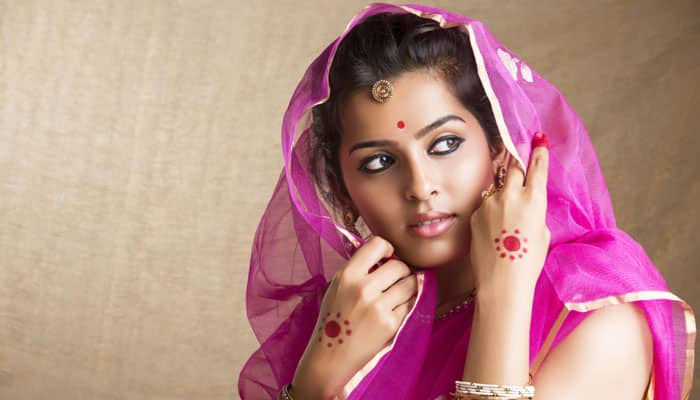Step up Indian men—or we’ll stay fortunately ever after with our careers
In Rajasthan the bindi is often worn spherical, long tilak formed bindi are also common, in addition to the crescent moon on some events. Decorative bindis have turn into popular amongst women in South Asia, no matter religious background.
History
The Begums of Bhopal were also thought of notable female rulers throughout this period. Chandramukhi Basu, Kadambini Ganguly and Anandi Gopal Joshi were some of the earliest Indian women to obtain a level. Apart from their beauty use, bindis have found a contemporary medical utility in India. Iodine patch bindis have usually been used amongst women in north-west Maharashtra to battle iodine deficiency.
Gita Sen – tutorial, scholar, and activist specializing in population coverage. She has labored with the United Nations System and is the General Coordinator of DAWN (Development Alternatives with Women for a New Era). ] Sen is an adjunct professor at Harvard University and a Professor Emeritus on the Indian Institute of Management Bangalore.
They are generally worn purely for decorative purpose or type assertion with none non secular or cultural affiliation. Decorative and decorative bindis had been launched to different elements of the world by immigrants from the Indian subcontinent. International celebrities such as Gwen Stefani, Julia Roberts, Madonna, Selena Gomez and lots of others have been seen wearing bindis.[citation needed] The appropriateness of such makes use of has been disputed. In Southeast Asia, bindis are worn by Balinese and Javanese Hindus of Indonesia.
It supplies employment to forty three,000 (in 2018) women across the nation. In rural India within the agriculture and allied industrial sectors, women account for as a lot as 89.5% of the labour force. In general farm production, women’s common contribution is estimated at 55% to sixty six% of the total labour. According to a 1991 World Bank report, women accounted for 94% of whole employment in dairy production in India. Under the Non-Formal Education programme (NFE), about 40% of the NFE centres in states and 10% of the centres in UTs are exclusively reserved for girls.
In addition to this, some upper caste Hindu women rejected constraints they confronted under Brahminical traditions. However, efforts for improving the standing of girls in Indian society had been considerably hot indian brides thwarted by the late nineteenth century, as nationalist movements emerged in India. These actions resisted ‘colonial interventions in gender relations’ particularly in the areas of household relations.
A widow was not allowed to wear bindi or any ornamentation associated with married women. In modern instances, self-adhesive bindis are available in numerous supplies, often made from felt or skinny metallic and adhesive on the other side. These are simple to apply, disposable substitutes for older lac tikli bindis. Sticker bindis come in many colors, designs, materials, and sizes. A similar marking can be worn by infants and youngsters in China and, as within the Indian subcontinent and Southeast Asia, represents the opening of the third eye.
However, in rural India, girls proceed to be much less educated than boys. According to the National Sample Survey Data of 1997, solely the states of Kerala and Mizoram have approached common feminine literacy. According to scholars, the main factor behind enhancements within the social and economic standing of ladies in Kerala is literacy. In 2006, the case of Imrana, a Muslim rape sufferer, was highlighted by the media. The pronouncement of some Muslim clerics that Imrana should marry her father-in-law led to widespread protests, and eventually Imrana’s father-in-legislation was sentenced to 10 years in jail.
Anuradha Roy
As the ladies refuse to talk of the violence and find assist, they are also not receiving the right remedy. This happens although women in India are legally protected against domestic abuse under the Protection of Women from Domestic Violence Act. Around 70% of girls in India are victims of home violence, in accordance with Renuka Chowdhury, former Union minister for Women and Child Development. Domestic violence was legally addressed in the Eighties when the 1983 Criminal Law Act launched part 498A “Husband or relative of husband of a lady subjecting her to cruelty”.

Gita Sahgal – writer and journalist on problems with feminism, fundamentalism, and racism, a director of prize-winning documentary movies, and a women’s rights and human rights activist. Vina Mazumdar – secretary of the first Committee on the Status of Women in India and founding Director of Centre for Women’s Development Studies (CWDS). Padma Gole – poet whose writings faithfully depicted the domestic lives of Indian center-class women. Mira Datta Gupta – activist for girls’s points and one of many founding members of the All India Women’s Conference.
Being childless on the earth’s most fertile nation
Several Indian states had been ruled by women throughout British colonial advance together with Jhansi (Rani Laxmibai), Kittur (Rani Chennama), Bhopal (Quidisa Begum) and Punjab (Jind Kaur). 505,152 indian women inventory photographs, vectors, and illustrations can be found royalty-free.
